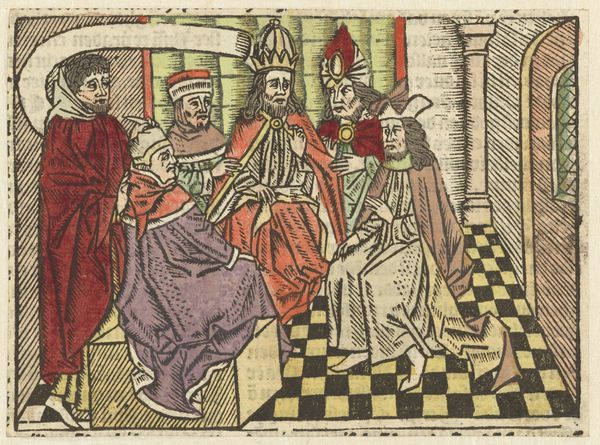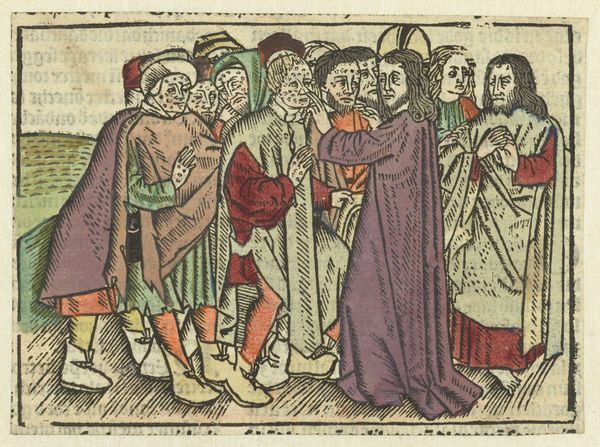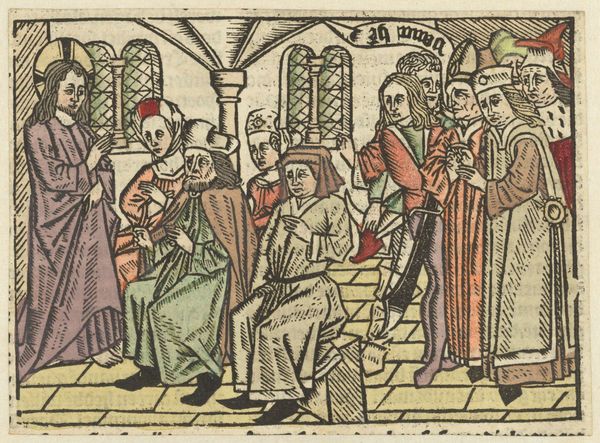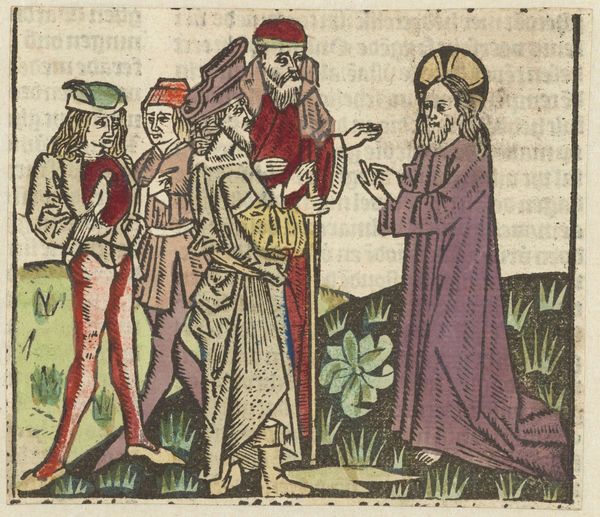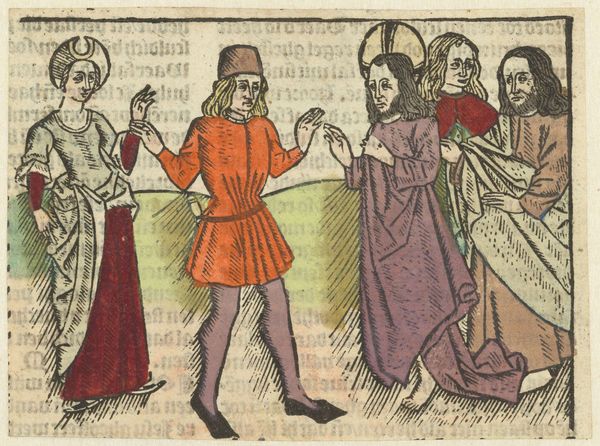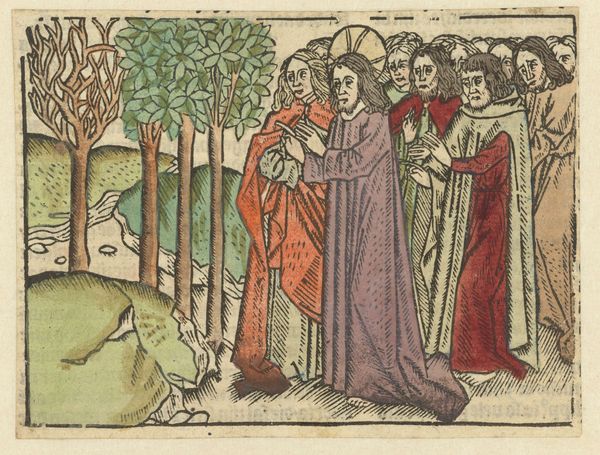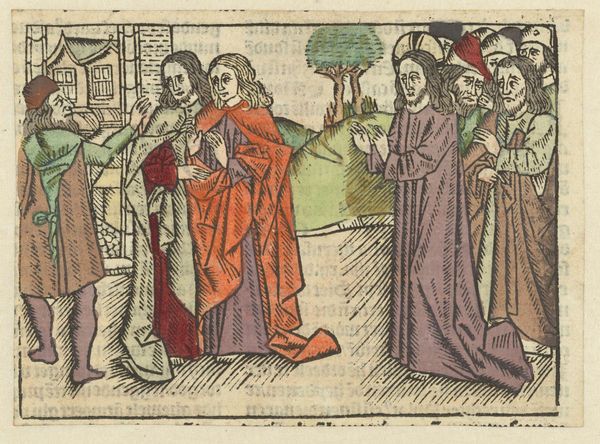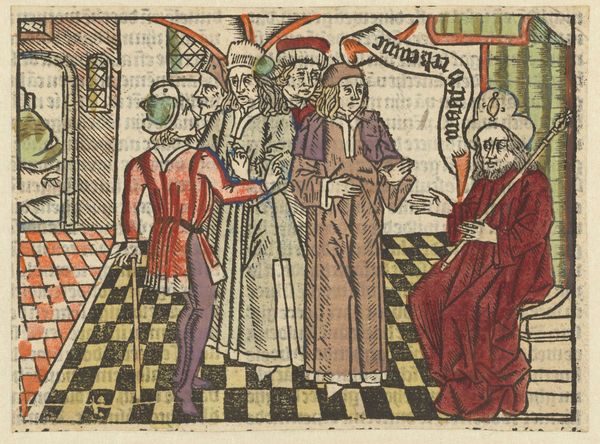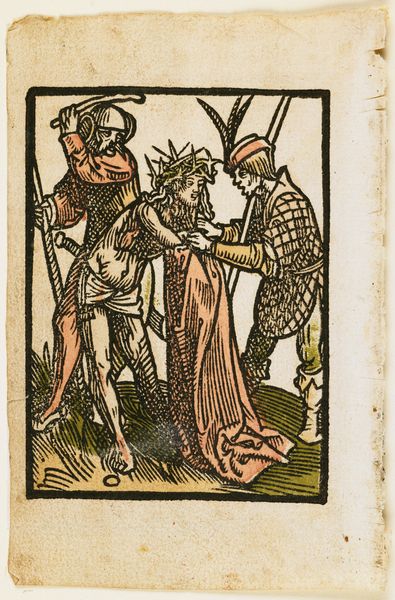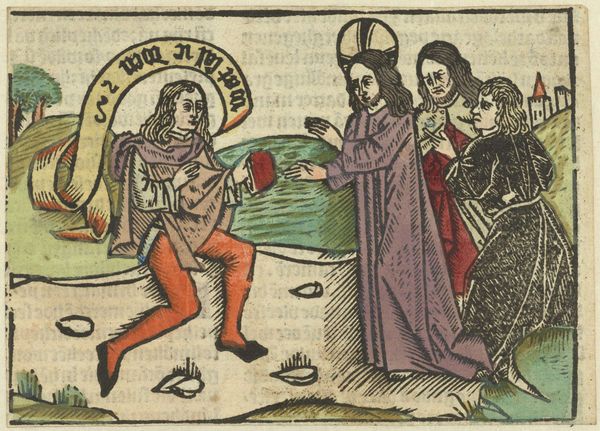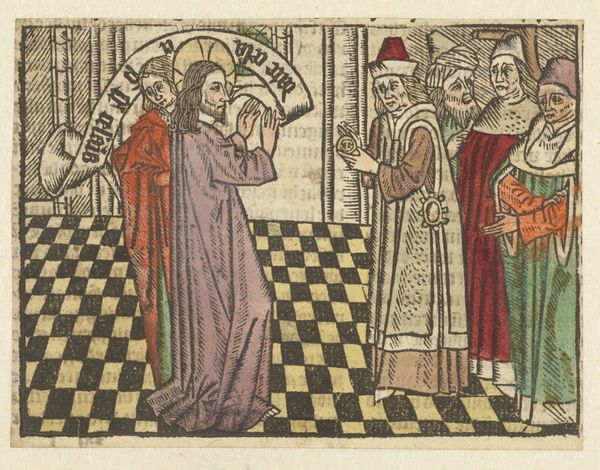
print, woodcut
# print
#
woodcut
#
genre-painting
#
history-painting
#
northern-renaissance
Dimensions: height 94 mm, width 128 mm
Copyright: Rijks Museum: Open Domain
This anonymous woodcut, likely made in Antwerp in the 16th century, depicts Christ healing a possessed man. But to what extent does its visual language reflect the cultural and social context of its creation? The image uses visual codes to convey meaning. Christ, set apart by his halo, is shown healing a man afflicted by demons. The demons themselves are represented in the image as birds, that inhabit the afflicted man’s head. Consider how the artist translates a religious story into a visual form, using recognizable symbols and cultural references. The woodcut was made at a time when the Catholic Church held significant power. Images like this one were used to teach biblical stories and reinforce religious beliefs. However, the rise of Protestantism and the subsequent iconoclasm challenged the authority of religious imagery and artistic conventions. By studying historical sources, such as religious texts and social commentaries, we can gain insight into the complex interplay between art, religion, and society in 16th-century Antwerp. The meaning of art is always contingent on its social and institutional context.
Comments
No comments
Be the first to comment and join the conversation on the ultimate creative platform.
